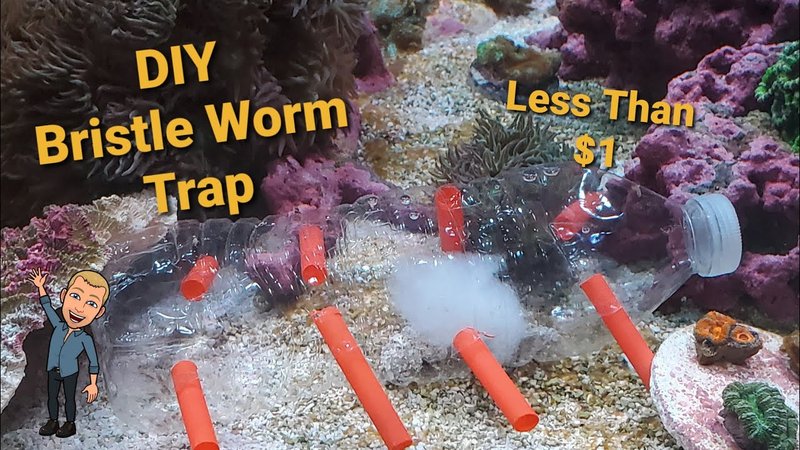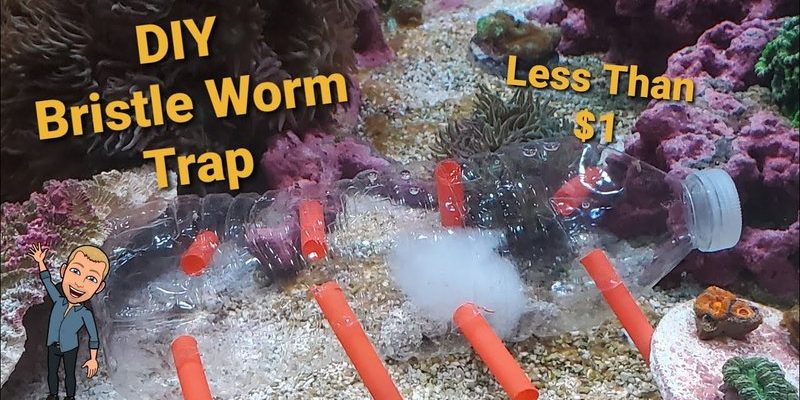
In this guide, we’ll walk through effective tank cleaning routines that help keep bristle worms at bay. Think of it as a recipe for a balanced aquarium—where every step matters. You wouldn’t throw a dinner together without prepping the ingredients first, right? Similarly, a little bit of care in cleaning your tank can lead to a thriving aquatic environment. We’ll cover practical, easy-to-follow methods that even beginners can implement, ensuring your fish and plants remain vibrant while keeping those pesky bristle worms in check.
Understanding Bristle Worms in Your Aquarium
Bristle worms are generally regarded as scavengers in your tank. They feast on leftover food and decomposing matter, which is why they’re often found lurking in the substrate or rocks. While having a few around isn’t a big issue, an explosion in their population can indicate problems, like overfeeding or inadequate tank maintenance.
You might be wondering how these little invaders manage to pop up in the first place. If your aquarium setup isn’t balanced or if there’s a lot of organic waste accumulating, bristle worms can thrive. Think of it like having a clean kitchen; if you leave food scraps out, you’ll attract unwanted pests. Your aquarium isn’t all that different.
So, what’s the best way to control these creatures? It all starts with a comprehensive cleaning routine. This will not only minimize the bristle worm population but also enhance the overall health of your aquatic friends.
Regular Water Changes: The Foundation of a Clean Tank
One of the simplest yet most effective routines is performing regular water changes. Think of it as a fresh start for your aquarium. When you change the water, you’re removing some of the waste and nutrients that feed bristle worms.
Aim for a water change of about 10-20% weekly. Here’s how you can go about it:
- Gather your supplies: You’ll need a gravel vacuum, a clean bucket, and dechlorinated water ready to go.
- Turn off all equipment: This includes filters and heaters. You don’t want any disturbances while you’re cleaning.
- Remove water: Use the gravel vacuum to siphon out water, sucking up any debris along the way.
- Replace with fresh water: Slowly add the dechlorinated water to avoid shocking your fish.
This routine not only keeps the water fresh but drastically reduces the chances of bristle worms getting a foothold.
Cleansing Your Substrate: A Hidden Key to Control
While you might think of your tank’s substrate (the bottom layer) as just decoration, it plays a huge role in your tank’s health. Leftover food, fish waste, and organic matter can easily accumulate, providing a feast for bristle worms. That’s why cleaning the substrate is a crucial part of your routine.
Here’s a straightforward method to cleanse it:
- Use a gravel vacuum: This nifty tool helps you remove debris from the substrate without disturbing the beneficial bacteria too much.
- Focus on corners: Worms like to hide where it’s dark. Make sure to clean those tricky-to-reach spots.
- Consider a deep clean occasionally: Every month or so, a deeper clean can help prevent the buildup of waste that invites bristle worms.
Taking care of the substrate keeps your tank environment clean and discourages those unwanted guests from multiplying.
Feeding Wisely: Less is More
Overfeeding is one of the main reasons bristle worms thrive. Fish can be pretty persuasive about wanting more food, but here’s the thing: less is often more when it comes to feeding.
To keep your tank clean and healthy, try these tips:
- Feed small amounts: Only give your fish what they can consume in a few minutes, once or twice a day.
- Skip a day: Every now and then, consider having a “fasting” day where you don’t feed them. This helps reduce waste buildup.
- Monitor leftovers: If you see uneaten food after feeding, you may be overdoing it. Adjust the portion sizes accordingly.
By being mindful about feeding, you not only reduce waste but also create a less inviting environment for bristle worms.
Maintaining Equipment: Filters and Light
Your tank’s filtration system plays a crucial role in keeping water clean and clear. Over time, filters can get clogged with waste, which can contribute to poor water quality and, ultimately, more bristle worms. Keeping your filtration system well-maintained is essential.
Follow these steps to maintain your equipment:
- Clean your filter regularly: Depending on your tank size, aim to clean it every few weeks. Rinse the filter media with tank water to preserve beneficial bacteria.
- Check your lighting: Make sure your light isn’t too strong. Bright lights can encourage algae growth, which can attract bristle worms as well.
- Replace when needed: Make sure to replace filter cartridges as per the manufacturer’s instructions to keep everything running smoothly.
A clean filtration system supports the stability of your tank and goes a long way in minimizing unwanted pests.
Adding Cleanup Crew: Natural Defenders
Did you know that some fish and invertebrates can help keep bristle worms in check? These creatures are your aquarium’s cleanup crew, and they play a helpful role in maintaining balance.
Here are a few options for your tank:
- Certain species of fish: Wrasses, for example, are known to snack on bristle worms, helping keep their population down.
- Shrimp: The Skunk Cleaner Shrimp is a great addition that will also help clean your tank. Just make sure they’re compatible with your other fish!
- Snails: Certain types of snails can help consume leftover food, thus reducing the overall waste that can lead to worm growth.
By including a cleanup crew, you create a diverse ecosystem that actively helps manage the tank’s health.
Maintaining an aquarium is a rewarding journey, but it requires a bit of diligence. By fitting these tank cleaning routines into your schedule, you create a cleaner, healthier environment that minimizes bristle worms. Remember, it’s all about balance. Regular water changes, careful feeding, substrate cleaning, equipment maintenance, and adding natural defenders will work together to keep your tank thriving. So, grab a cup of coffee, take a moment to appreciate your aquatic friends, and let the cleaning routines do their magic. Happy fishkeeping!

